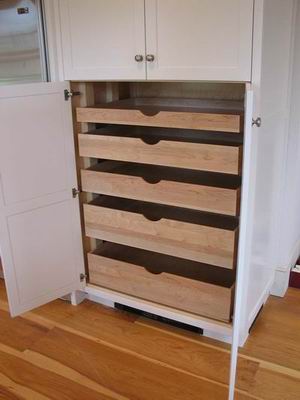Q.
A customer of mine is requesting that I build her kitchen cabinet doors out of 3/4-inch solid oak panels with routed edges.
I expressed my concerns to her about the panels warping, but she still wants them, so I am planning on the following to ensure the doors remain as flat as possible:
1. Ensure that the moisture content of the wood is consistent throughout all boards used, about 9 percent.
2. Rip all boards down to 3 inches or less, and alternate growth rings when gluing up.
3. Apply three heavy coats of lacquer to ensure an adequate seal.
My question: Is there anything else I should do to keep the doors flat? Here in Minnesota we have extreme temps and humidity/dryness so I need to take all precautions.
My lumber's usually at around 6 percent when I glue up, but settles to around 8 percent here in Oregon. I often use boards from 5 to 8 inches wide and don't alternate growth rings, but rather assemble for color. I've always had doors finished ASAP, ensuring that the end grain is sealed as well.
No matter how you construct, if a door is exposed to harsh direct sunlight it will cup to some degree. (In the shop you can turn it around and it will cup the other way.) Keep your doors as narrow as possible, especially if they may lay in the sun's way.
We always did this after finishing and really never had any problems.
Alternate the lumber end for end and top for bottom, both.
Do not use a cleat on the back side, unless you also allow for the screws to move as the door changes MC (slotted holes and pan head screws with washers).
Use 6 percent MC lumber (this is key, so I repeat it), especially in Minnesota.
Spar varnish will provide more moisture barrier than many lacquers. Coat all sides, edges, faces, etc.
Buy a portable relative humidity (RH) measuring device at Radio Shack for under $30 and measure the humidity in the home in question, or in your own home. If you see the RH is about 30 percent, then 6 percent MC is what you need. It is possible that the RH may be under 25 percent, but in the summer, it will be a little higher.
Gene Wengert, forum moderator
